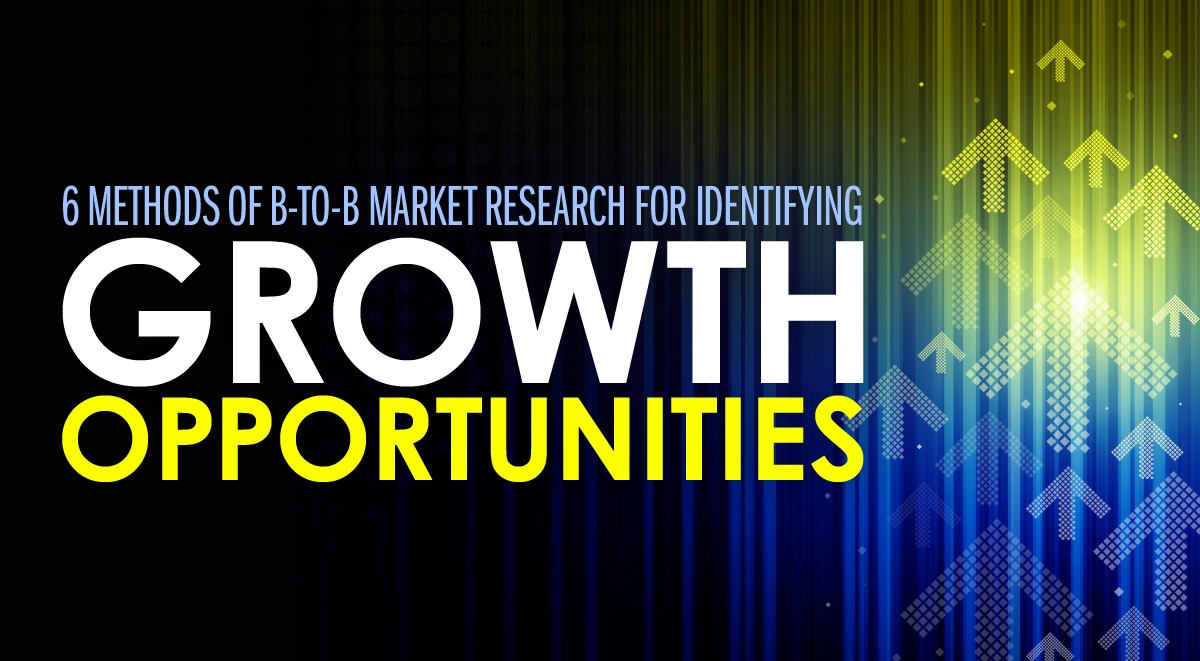
Market Research for Growth
Growth – it’s the word every business person, manager and leader love to hear. We’ve worked with dozens of B-to-B companies and have consistently found a similarity amongst them all – people want to learn about and understand growth opportunities in their marketplace, or adjacent markets. Growth opportunities often come disguised, however, and lack of knowledge, together with an unsureness of the idea, make for a challenging environment to launch new products or expand into a new market. Organizations can occasionally default to cost-cutting strategies to stimulate growth or may believe that the market is saturated and there are no additional opportunities available. The fact is, it ought to be more comfortable to uncover growth trends today in this hyper-transparent, overly communicative, “social media” world. Take time and investment to capture data that will allow you to distinguish viable growth opportunities with the highest potential. Without data to support the growth, false starts occur, or companies struggle to get the innovation team off the ground. Here are a few ideas for you to identify the most promising growth initiatives and successfully move forward.
1. Capture numeric data to most effectively understand how to compete.
Research the leading brands in the competitive set. Nothing beats understanding what customers think of the leaders in the marketplace, and more particularly, WHY customers feel the leaders hit the mark. Is it because of their warranty? The product performance? The best customer service? Until you understand WHY leaders run away with the market, there is no way to distinguish potential growth opportunities.
2. Profile your customers.
Understand customer needs based on areas of expertise or industry involvement and considering allocating resources to underserved segment/audiences. Koch, Founder of Sam Adams Beer, recounts the story of how he launched a $200M brand extension of hard cider to contractors working under the sun all day, wanting an alcoholic beverage, but something more refreshing than beer. After identifying this segment of customers, he expanded their Angry Orchard line of hard cider into a $200M business just based on one part of his B-to-B customer base.
3. Listen to the needs and concerns of current, past and potential customers
Nothing can beat conversations with actual customers (NOT consumers). Too often, B-to-B companies that focus solely on enterprise sales will fall into the trap of going straight to consumers, when the real valuable insights will come from decision influencers, distributors, and business people other industry professionals that are directly influencing the purchase decision. Understanding packaging criteria for shelf placement from a distributor’s perspective helped one construction materials manufacturer modify their package design to achieve higher presence and product visibility for consumers, leading to increased revenue. Another manufacturer discovered their product line being frequently recommended to consumers by contractors/installers for quality reasons just because the product was most comfortable to install.
4. Analyze Megatrends.
Dive into industry swings to predict the next innovation opportunity. Some of the more recent examples might include millennials moving to the city, the demand for boutique hotels, and focus on renovation and renewal of inner-city buildings. While these seemingly innocuous changes in the tastes of millennials may seem inconsequential to B-to-B companies, they pre-dated the necessity of concrete polishing as a finished surface.
5. Follow venture capital investments.
Tracking private equity and venture capital investment dollars can provide insight on innovations, trends, and company’s directions before they become general wisdom. As an example, a search on “thermostats” would have shown funding interest in “thermostats with Wi-Fi connection” as early as 2008, thereby alerting the HVAC industry to the upcoming connected thermostat revolution – Nest only debuted in 2011. That means this trend appeared a full three years ahead of its mass adoption timeframe.
6. Watch for trends at industry Trade Shows.
Trade shows can provide loads of direction on where to go and what actual customers need. Listen to conversations, ask questions at booths, look at presentations and plan to capture and review your notes. Reviewing records and taking the time to review them can lead to “connecting the dots” after further reflection.
Apart from physical assets, the resources for innovation can come from people and knowledge. B-to-B research leverages both resources, surveys and conversations with subject matter experts to uncover their insights putting you into the driver’s seat of identifying legitimate, realistic growth opportunities for your company.
